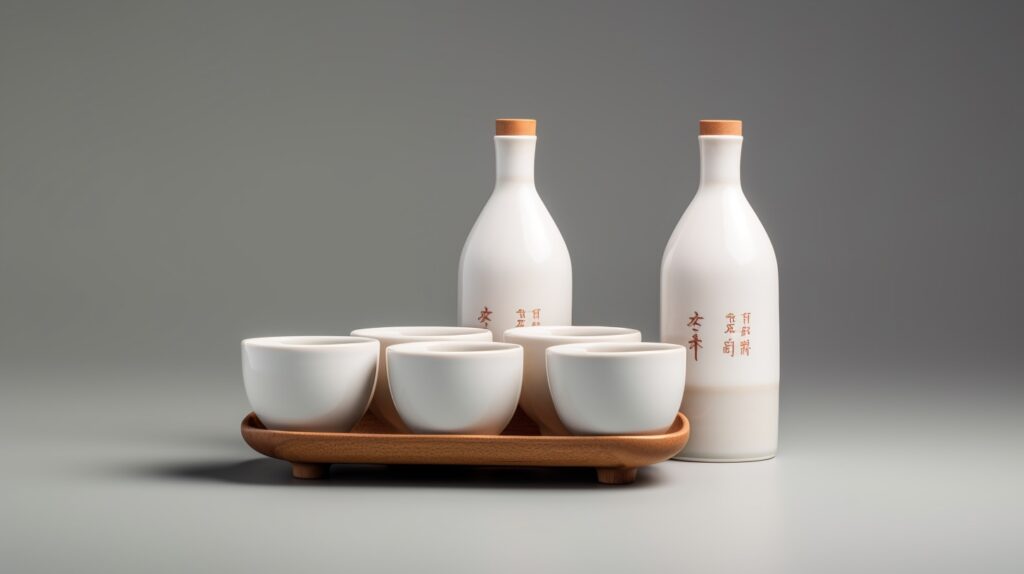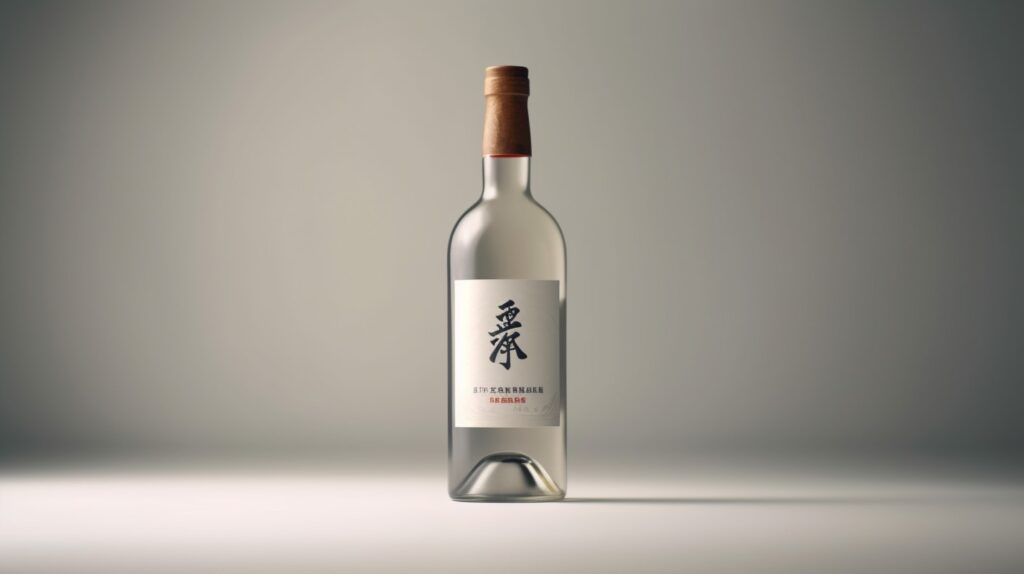Sake, also known as Nihonshu in Japan, holds an esteemed place in the world of beverages. A traditional alcoholic drink, its origins are intertwined with Japanese culture and history.
With a history dating back to the 3rd century, sake was first brewed at the imperial court and in temples and shrines. Over time, sake brewing became more refined and commercialized, becoming an integral part of Japanese cuisines and celebrations.
🔬What is Sake & What Is It Made Of?
Sake is a Japanese rice wine made by fermenting polished rice. Unlike other types of wine, where the sugar needed to produce alcohol is naturally present, sake is made through a brewing process similar to beer, where the starch from the rice is converted into sugars that ferment into alcohol.
There are several varieties of sake, each with its own unique flavor profile and attributes. Some of the most common types include Junmai, Honjozo, Ginjo, and Daiginjo. These varieties are largely differentiated by the degree to which the rice is polished or milled before brewing, affecting the final taste and quality of the sake.
👅 What does Sake Taste Like?
Sake boasts a complex flavor profile that can range from sweet to dry, light to full-bodied, and delicate to robust. Its flavor is often described as crisp and fresh, and it can carry notes of fruits, herbs, and spices. Depending on its type and quality, sake can have nuances of apple, pear, melon, banana, and even hints of caramel and anise. The texture can be silky or creamy, with a long or short finish.
❤️🩹 Is Sake Healthy?
While moderation is key when consuming any alcoholic beverage, sake does offer several health benefits. It is low in cholesterol, gluten-free, and contains several amino acids. Some studies suggest that in moderate amounts, sake can help improve cardiovascular health, boost the immune system, and even increase metabolism.

💡 What is Sake Good For?
Sake is an incredibly versatile beverage that shines in both culinary and non-culinary contexts. Its distinctive flavor and characteristics make it a must-try for any food and drink enthusiast.
- Pairing with Food: Sake pairs beautifully with a wide range of dishes. Its refreshing taste and fruity, spicy, and umami notes can complement and enhance the flavors of seafood, grilled meats, cheese, and even desserts.
- As a Cooking Ingredient: Sake is often used in Japanese cooking, lending its subtle sweetness and umami undertones to a variety of dishes. It can be used to deglaze a pan, enhance the flavor of soups and broths, and marinate meats to tenderize them and add flavor.
- Celebrations and Rituals: In Japan, sake plays a central role in Shinto purification rituals, wedding ceremonies, and other traditional celebrations. It symbolizes purification and the connection between gods and humans.
- Sake Cocktails: With the global rise of cocktail culture, sake has found its way into the mixologist’s arsenal. Its unique flavor profile can add an interesting twist to classic cocktails or inspire the creation of new ones.
- Sipping Drink: High-quality sake, such as Daiginjo or Junmai Daiginjo, is often enjoyed on its own, either chilled or warmed, depending on the variety. Sipping it slowly allows one to appreciate its complex flavors and aromas.
- Gift Giving: A bottle of premium sake can be a sophisticated and thoughtful gift, perfect for expressing respect and good wishes on special occasions.
- Culinary Experiments: With a broad variety of types and flavors, sake invites culinary creativity. Whether it’s experimenting with pairings or using sake in surprising ways in cooking and baking, the possibilities are exciting and virtually endless.
- Beauty and Health: Surprisingly, sake isn’t just for drinking. It’s rich in kojic acid, a natural component that’s effective in brightening skin and reducing hyperpigmentation. Some even believe that sake baths can detoxify the body and improve circulation.

🥘What is Sake Used For?
Sake is a multifaceted ingredient with a plethora of uses in the culinary world. Here are some ways that sake is used in various dishes:
Sake Cocktails
Sake’s unique flavor profile makes it a great addition to cocktails, providing a refreshing twist. For instance, a “Sake-tini,” a variation on the classic Martini, incorporates sake for a Japanese-inspired cocktail.
Sake Marinades
Sake’s tenderizing properties make it a wonderful ingredient for marinades. It helps to break down tough proteins in meat, making them tender and flavorful.
Sake Glazes
Sake can also be reduced into a glaze for dishes like teriyaki chicken or glazed salmon, adding a deep, umami flavor that enhances the dish.
Sake Steamed Clams
This classic Japanese dish relies heavily on sake for its sweet and savory broth. The alcohol in the sake also helps to open the clams, releasing their briny flavor into the broth.
Sake Braised Dishes
Braising dishes in sake, such as pork belly or short ribs, imparts a rich, deep flavor to the meat. The alcohol in the sake helps to tenderize the meat, while the sugars in the sake caramelize during cooking, adding a subtle sweetness.
Sake Kasu Soup
This is a traditional Japanese soup made using sake kasu, which are the lees left over from sake production. Sake kasu has a rich, complex flavor that makes this soup delicious and unique.
Sake Lees Pickles
Tsukemono, or Japanese pickles, can be made using sake lees. The lees impart a distinctive, somewhat yeasty flavor to the pickles.
Sake Ice Cream
Innovative dessert makers are even using sake to flavor ice cream. The result is a unique and sophisticated dessert with the subtle flavor of sake.
Sake and Soy Sauce Dip
In Japan, a common dipping sauce for sashimi is a simple mixture of sake and soy sauce. This combination brings out the delicate flavors of the fish.
Sake-infused Rice
Sake can also be used to flavor rice dishes. A small amount of sake added to the cooking liquid imparts a subtle flavor to the rice.
Sake in Desserts
Besides ice cream, sake can also be used in a variety of other desserts. For example, it can be used to macerate fruits, in cake batters, or in sweet sauces.
Sake in Skincare
Sake is often used in skincare products due to its natural brightening properties. It can be used in homemade facial masks or added to bathwater for a soothing, skin-softening effect.
